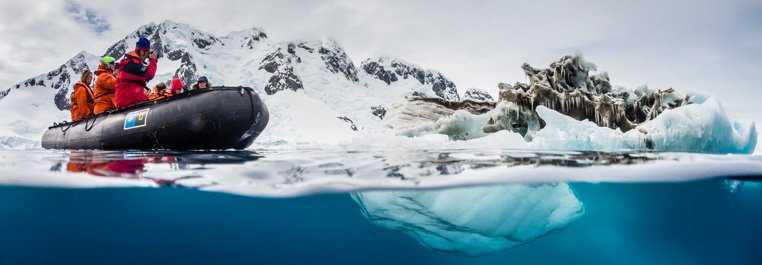Early this morning National Geographic Explorer sailed through the scenic Lemaire Channel. The Lemaire is seven miles of challenging navigation through a narrow area, about a mile wide, sided with spectacular views. As Gunnar Andersson writes, “…of mighty fells with snowy crowns and sharp uncovered teeth, around the valleys through which enormous, broad rivers of ice flow.”
Booth Island, where Charcot’s Francais expedition worked, provided premier views of ice—grease, brash, bits, and bergs—from our fleet of Zodiacs and hikes ashore. Those who chose to climb up the snow-covered slopes of the island broke this summer’s first trails to the penguin colonies where all three species of brushtail penguins—Adelie, gentoo, and chinstrap—share the nesting real estate of bare ground and rock. Here the panoramic views were spectacular.
The Penola Strait region, directly south of the Lemaire Channel, provided stunning scenery in Antarctic summer conditions, as we navigated further south than any other expedition ship this season, making 65 degrees 15 minutes south. History was made by more than fifty brave, or crazy, souls, who decided to plunge into the near-freezing waters of Penola Strait.
Evening light illuminated our return passage through the Lemaire Channel. Just before midnight, the waxing moon hung in the painted sky over Mount Francais, the tallest peak in the Peninsula, with an elevation of 2,821 meters.
This day, surrounded by ice, quietly held many firsts: an expedition afternoon further south than any other this season. Polar plunging in Penola. The moon rise in the Lemaire. And navigation in ice surrounded by the vast and wild scenery that is surely to remain with each of us. This is Antarctica.









